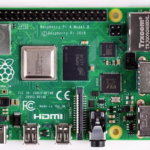Power consumption of the embedded controller is a primary concern in low-power design. Arduino boards are often used in devices that rely on battery or solar charging. Such devices often deploy far from the power line to have periodic battery replacement or are mobile devices designed for periodic charging cycles. In such a case, optimizing […]
What is TinyML?
Data science has not just remained a field of scientific computing and research. In the internet-connected world, data science, machine learning, and artificial intelligence are far more applicable than ever imagined. No doubt, the very first leap in the practical applications of machine learning and artificial intelligence happened when enterprise websites, including social media platforms, e-commerce […]
What are top applications of CAN protocol?
The CAN (controller area network) protocol was developed by the European automotive electronics company Robert Bosch GmbH in 1983 for in-vehicle networks. The intention behind the development of the CAN protocol was to enable robust data communication between different electronic control units (ECU) and microcontroller control units (MCU) of a vehicle on a single wire […]
The top computer vision tools for embedded systems
Computer vision is reaching new levels, far beyond basic image processing. This is thanks to the integration of artificial intelligence. AI now enables computers and systems to derive meaningful information from digital images that can be used in advanced industries. Currently, one of the most common applications is in security and surveillance. A computer vision […]
What are varactor or tuner diodes?
A varactor diode or varicap diode is a semiconductor diode that changes its junction capacitance significantly depending on the applied reverse bias voltage. Many semiconductor PN junction diodes are designed to exhibit specific electrical properties; the varactor diode or varicap diode is one such semiconductor — it is specifically designed to exhibit unique junction capacitance […]
What are the top programming languages for machine learning?
Artificial intelligence (AI) and machine learning (ML) are continuing to become more mainstream and you’ll find the technology in everything from your smartphone apps and computer programs to smart tech and appliances — and automobiles (think self-driving cars). These technologies are no longer confined to scientific computing and statistical research but have, for the most part, become a […]
What is 3D scanning?
Since 3D scanners have become more affordable, 3D scanning has changed the world of custom 3D printing. Once, 3D scanning was only used in military equipment and spacecraft parts production. With desktop and handheld 3D printers available for a few hundred dollars, 3D scanning has found a place in home fun and hobby projects. You […]
What are some common EMI/EMC tests?
An EMC test is known as Electromagnetic compatibility, a certification for electronic devices to maintain their limitation of electromagnetic waves. As discussed in the previous article, there are two types of EMC tests: emission (EMI) and immunity (EMS). EMI (Electromagnetic Interference) tests measure the magnetic waves emitted by the device, and EMS (Electromagnetic Susceptibility) tests […]
What are different types of biometric sensors?
The term “Biometrics” is derived from “bio’” which means life, and “metrics”, which means measurement. Biometrics is developing for use in various technologies, including the unique identification and recognition of people. The technology at its current juncture is widely used in security and surveillance systems. Biometrics also has the possibility of converging with other technologies […]
Introduction to Raspberry Pi 4
Raspberry Pi is a credit-card-sized, single-board computer developed by the Raspberry Pi Foundation, a UK-based charity that works to ensure global access to computing and digital technology. It was initially developed as a low-cost microcomputer to impart digital skills to kids. It comes without any power supply or peripherals as it’s meant to be programmed […]











